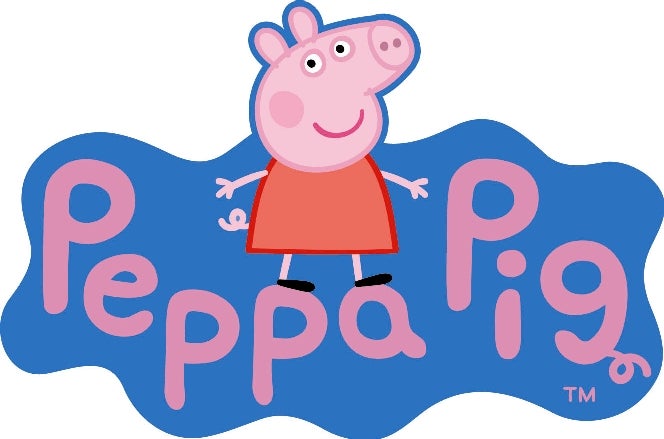Enough tokenism. Show us some disabled superheroes for kids to look up to
Peppa Pig with a walking frame? It’s International Day of Persons with Disabilities and time children’s TV heroes spoke to a vital demographic of young viewers.

Your support helps us to tell the story
From reproductive rights to climate change to Big Tech, The Independent is on the ground when the story is developing. Whether it's investigating the financials of Elon Musk's pro-Trump PAC or producing our latest documentary, 'The A Word', which shines a light on the American women fighting for reproductive rights, we know how important it is to parse out the facts from the messaging.
At such a critical moment in US history, we need reporters on the ground. Your donation allows us to keep sending journalists to speak to both sides of the story.
The Independent is trusted by Americans across the entire political spectrum. And unlike many other quality news outlets, we choose not to lock Americans out of our reporting and analysis with paywalls. We believe quality journalism should be available to everyone, paid for by those who can afford it.
Your support makes all the difference.As my daughter cheers Mike the Knight or smiles at Peppa’s puddle jumping, I’m reminded of a depressing reality.
Despite the statistic that 6% of children are disabled in the UK, there’s not so much as a hearing aid or facial disfigurement between the TV heroes so revered by young viewers.
We live in largely enlightened, diversity-friendly times. Yet, although it is acceptable for a one-armed presenter to front kids’ TV, a disabled cartoon star appears to be the ultimate taboo.
At home, we affectionately refer to my three-year-old’s walking frame as the ‘og pog’, after the bizarre three-wheeled vehicle Makka Pakka pushes in In the Night Garden. The fact this is the nearest to her own device she has ever seen a TV character use is a sad indictment on an industry that has vowed to serve children better.
The Beeb has publicly declared its intention to ‘showcase the UK’s complexity and diversity’? It could start by giving children’s protagonists wheelchairs and walking frames - equipment that is grounded in reality, rather than some strange, alternate universe.
It’s about more than just inclusivity. Thankfully, we’ve come a long way since disability drove the plot-line on kids’ TV (who can forget Byker Grove’s PJ being hit by a paintball? “Duncan, man, I’m blind!”). Increasingly now, disability is included as an incidental sideline, as in CBeebies’ Get Well Soon, where the wheelchair of puppet Kiwa goes unmentioned - quite rightly.
There are other notable exceptions, like the excellent Something Special, which showcases Makaton signs and celebrates children with learning disabilities. In fact, these days, you’re never too far from some representation of disability on children’s television - particularly the BBC.
Box-ticking aside, the real virgin territory for programme-makers lies in giving special needs to actual sword-waving, spell-casting, swash-buckling superheroes. It’s one thing including a disabled child in a cooking show, but creating a leading character for children to idolise, who also happens to have a disability? Now, that would be progress.
And it’s so desperately needed. The Paralympics went a long way to change attitudes, but certain facts remain. Only this summer, a survey by charity Scope revealed that almost half of disabled people felt that attitudes had worsened towards them in the last year. The same research showed that 87% of those questioned believed that having disabled people in the media would have a positive effect.
Not to mention those dismally frequent headlines about disability hate-crimes that I cannot bear to even read.
By denying young children disabled TV heroes at such a critical, impressionable age, the industry’s not just missing a trick - it’s perpetuating harmful stereotypes.
In my more mundane childcare moments, I’ve been known to dream up alternative plot-lines for the programmes so familiar in our house. In my version of Rastamouse, what would make a ‘bad ting’ even better would be to replace DJ mouse Scratchy’s roller skates with a motorised wheelchair.
And my take on animated deep-sea adventure Octonauts sees ‘brave polar bear’ Captain Barnacles battling a giant jellyfish by blinding it with the reflection from his walking frame.
Back to reality, and a quick audit of special needs references in children’s television throws up some dubious examples. Upsy Daisy’s attachment to her bed might be the closest to my daughter’s experience of an exhausting hormone condition, but I’m guessing it was included to enhance the storyline, rather than as a reference to hypothyroidism.
And if lovable ‘village idiot’ Goofy was a real person, he’d be recognised as having a learning disability, yet in Disney’s cartoons he’s portrayed as a laughing stock.
For young children, taboos don’t exist. Be it a uniformity of able-bodied characters, or a diversity of disabled and non-disabled superheroes, they’ll readily accept what they see on television as the norm.
So unless programme-makers recognise their power to shape future minds, and start giving their stars wheelchairs or cleft lips along with their superpowers, an entire generation will be robbed of positive, realistic role models.
Join our commenting forum
Join thought-provoking conversations, follow other Independent readers and see their replies
Comments